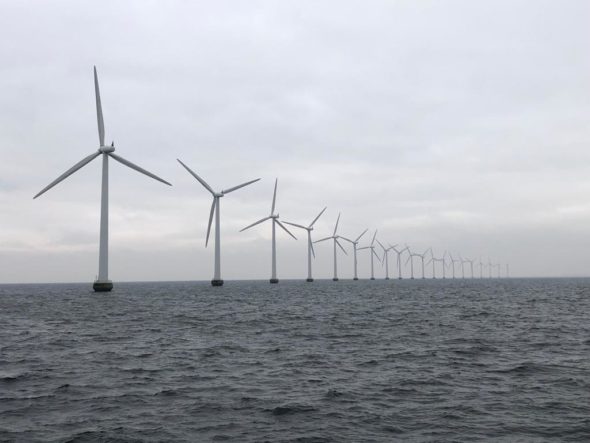A sector agreement for the development of offshore wind energy in Poland will be signed on 15 September. Its goal is to accelerate the development of offshore wind farms with as much participation of the Polish industry as possible. It also provides for solutions to make the farms critical infrastructure – writes Wojciech Jakóbik, editor-in-chief at BiznesAlert.pl.
Local content at 20-30 percent
Representatives of the government and offshore investors will sign the so-called „sector deal” to guarantee the largest possible share of local content in the development of this new industry. This indicator is expected to reach at least 20-30 percent, although representatives of offshore companies argue that it could be much higher. The reason behind this estimate is either a conservative approach, or a plan to boast about the results if they turn out to be higher than the initial assumptions.
The sector agreement is a platform for the government, investors and local governments to stay in contact. It is to coordinate activities for the rapid development of offshore wind farms in Poland. Poles want to have 5.9 GW in offshore capacity by 2030 and 11 GW by the end of 2040 thanks to the support system from the so-called Offshore Act with a budget of EUR 22.5 billion. The participation of the so-called local content in the first projects is expected to reach the mentioned 20-30 percent, for those implemented by 2030 the figure is to climb to 45 percent and at least 50 percent for those that will be built after 2030. The export of products and services for the offshore sector is expected to be worth PLN 2 and 5 billion respectively. The new industry is believed to add between 30 and 60 thousand new jobs in the coming years.
According to the deal, the installation terminal in Gdynia port will be ready in 2025, and the second one is to be prepared in 2026-2030. At least two service ports (in Łeba and Ustka) are to be built to facilitate the construction of offshore wind farms, and then to service them. As of 2022 dedicated R&D programs are to foster innovations in the offshore sector and transfer of technologies to Poland. The aim is to create complete logistic and port facilities that have an impact on the development of the coastal regions. The minister responsible for the maritime economy is to prepare such facilities using the funds reserved in the budget. They can come, among others, from the National Reconstruction Plan, in which Poland included investments in the installation port.
Investors are expected to prepare competitive bids to supply at least part of the offshore wind farm development in 2024-26, and to grow the full supply potential in 2027-30. National installation and/or service fleet operators are to be appointed, with a view of becoming fully fledged entities by 2030. The signatories of the letter would like to reach a point where up to 50 percent of the supply will come from the domestic market by the end of this decade.
The sector agreement also provides for cooperation to generate hydrogen from surplus energy generated by offshore wind farms. This is especially important, because the Hydrogen Valley, understood as the production center of this fuel, can, at this point, be established only in Pomerania, thanks to the expectation that the offshore farms will produce a significant electricity surplus. Later on nuclear power could also play the same role. The excess energy produced in the wind farms can be transferred to electrolyzers and generate zero-emission hydrogen.
Offshore will be critical infrastructure
The remaining challenge is to introduce legislation that will allow for transporting the huge wind farm components, cooperating to assess the impact of the offshore sector on the state’s defence capabilities, and securing the border by changing the characteristics of the maritime areas in cooperation with the ministries responsible for safety. This concerns, among others, radiolocation and communication of the Armed Forces near the farms. Offshore is to become critical infrastructure, the impact of which on the defence policy of the state is to be clearly defined, so that Warsaw can reprogram it to take into account the new characteristics of the marine areas after the farms are built. This pertains to the armed forces, as well as the Border Guard. This is especially important in view of the fact that while the offshore law was still in the making, the ministries and other agencies responsible for the security of the country have taken interest in the bill. Relevant expertise is to examine the impact of the offshore wind farms on national security and defence, radar imaging systems, technical surveillance, maritime radio communications, air traffic control systems and Polish Navy and Border Guard radio communications. Wind farm operators are to cooperate with these entities at every stage of the projects, and in return receive protection under the critical infrastructure provisions of the Emergency management act and the National Critical Infrastructure Protection Program.
Coordinating the policies on offshore wind farms
However, the most important result of the sector agreement is regular consultations on legislative changes in Poland with the offshore wind industry. Predictability of the law is a basic condition for the development of new investments. Meanwhile, there are various speculations about plans to subordinate all new offshore licenses to Polish state-owned companies. From the point of view of the state, this solution guarantees control, but investors are afraid that they will not be able to build momentum, and without that there will be no technology transfer. This means, it will be difficult to gather the minimum of three players necessary to launch an offshore auction in the next license distribution. Thanks to the new communication platform – the Coordination Council, which will meet at least once every six months, it will be possible to dispel such doubts on a regular basis.









